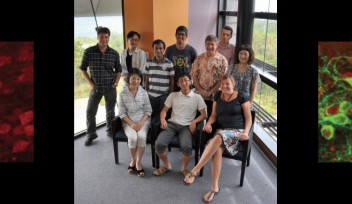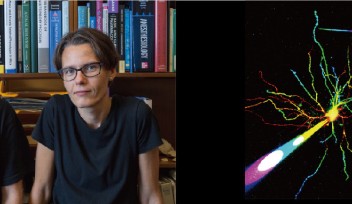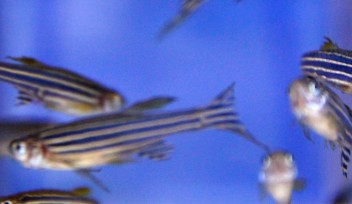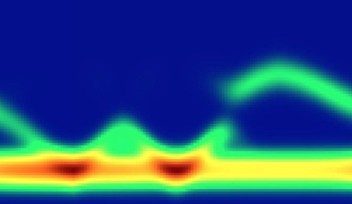Bridging science and traditional practices across cultures

Despite being separated by nearly 5,000 miles of Pacific Ocean, the people of Okinawa and Hawai’i have a lot in common. Being based on small island archipelagos means that they rely on both the land and the sea. They also share an understanding about the need for sustainability – environmental and economical – and the importance of growing and nurturing talent in the care of these resources.
Furthermore, they have a similar socio-political position in their respective nations as well as a history of colonization. This continues to impact them today, resulting in limited educational opportunities and other disadvantages compared to their ‘mainland’ counterparts. But both groups also have a rich indigenous heritage and cultural practices that are strongly linked to the management of natural resources.
A new outreach program, run by the Okinawa Institute of Science and Technology Graduate University (OIST) and Hawai’i-based nonprofit, Kuaʻāina Ulu ʻAuamo (KUA), will use these similarities to facilitate a cross-cultural learning exchange that focuses on traditional natural resource management. Called Shima: Okinawa-Hawai’i STEM Education Collaborative, this program will allow about ten students from Okinawa and ten students from Hawai’i to work on projects centered around seaweed farming.
“Indigenous education is very much about science education,” said Dr. Misaki Takabayashi, Vice Dean of the Graduate School at OIST and former marine science professor and vice chancellor at University of Hawaiʻi at Hilo. “In Hawai’i, there’s a strong understanding about the responsibility to look after the land. It’s normal for kids to know about this responsibility and go on to study marine science. There’s an alignment of identities between being a Native Hawaiian and a science practitioner. I want to show this to the students from Okinawa.”
Scheduled to start in May 2021, the program will include both self-guided work and collaborative web-based discussions. In Okinawa, the students will cover topics across seaweed farming, from ecology and chemistry to environmental management, and will involve guidance from local seaweed farmers.


“Seaweed farming is an important part of indigenous practices,” said Meria Miller, OIST Science Education Outreach Team Leader. “We can use it to talk about the different types of seaweed, their properties and applications, and related issues, like red soil runoff, ocean pollution, and coral reef conservation. As we’ll have students joining from all over the prefecture, we’ll see the geographic diversity as well.”
Both sets of students will eventually meet face-to-face in Hawai’i in August 2021 for final presentations. Coordinating the Hawaiʻi side of the program is KUA, a non-profit organization that supports the growth of sustainability and the caring of biocultural resources through shared responsibility. KUA facilitates networks of fishers, farmers, gatherers, and families of rural and indigenous Hawai’i communities, with a vision of ʻāina momona–rich abundant ecological systems that support community well-being.
“We need to re-envision our relationship with the economy, with each other, and with our environment,” said Miwa Tamanaha, Co-director of KUA. “One way to do that is by nurturing our people’s connection to the environment. Our students are often hungry to do STEM and natural resources bridge a passion for mathematics, science, and technology with lived experience and identity. This program especially appeals to us because of the opportunity to do a study exchange with students from Okinawa. We have a similar history, ecosystem connections, and a lot to learn from each other.”
Wally Ito, Coordinator of KUA’s Limu Hui, a network of practitioners, educators, researchers, and families caring for Hawaiʻi’s native limu (seaweed), was inspired by a visit to Okinawa in October 2019. “I noticed that nearly every meal had seaweed. We visited this place in Onna village where they grow seaweed. It’s only been in the last few years that we’ve had a lot of interest from people wanting to grow limu in their communities to restore a once abundant resource. To see this in Okinawa, I had a vision of how our limu restoration operations in Hawaii could be expanded.”


With the help of Jie Pan, Senior Associate for Institutional Development at OIST, and David Janes, Senior Advisor to the President for Institutional Development, the Shima program has secured a $10,000 grant from the US Consulate General Naha Annual Program. The coordinators hope to run a similar program with different focal points, such as coral reef conservation, over the next few years.
As well as being an important learning and cultural experience for the students, the program also fits the long-term goal of fostering a connection with science and with OIST. “High school students tend to come to this crossroad where they’re thinking about their futures,” said Yuuki Guzman, assistant manager of OIST’s External Engagement Section. “We want to introduce STEM activities to them early on, through outreach programs like this one, to help with that decision making. From there we can keep them engaged with science and OIST, through science workshops, research internships, and hopefully, the PhD program.”
For press enquiries:
Press Inquiry Form


















